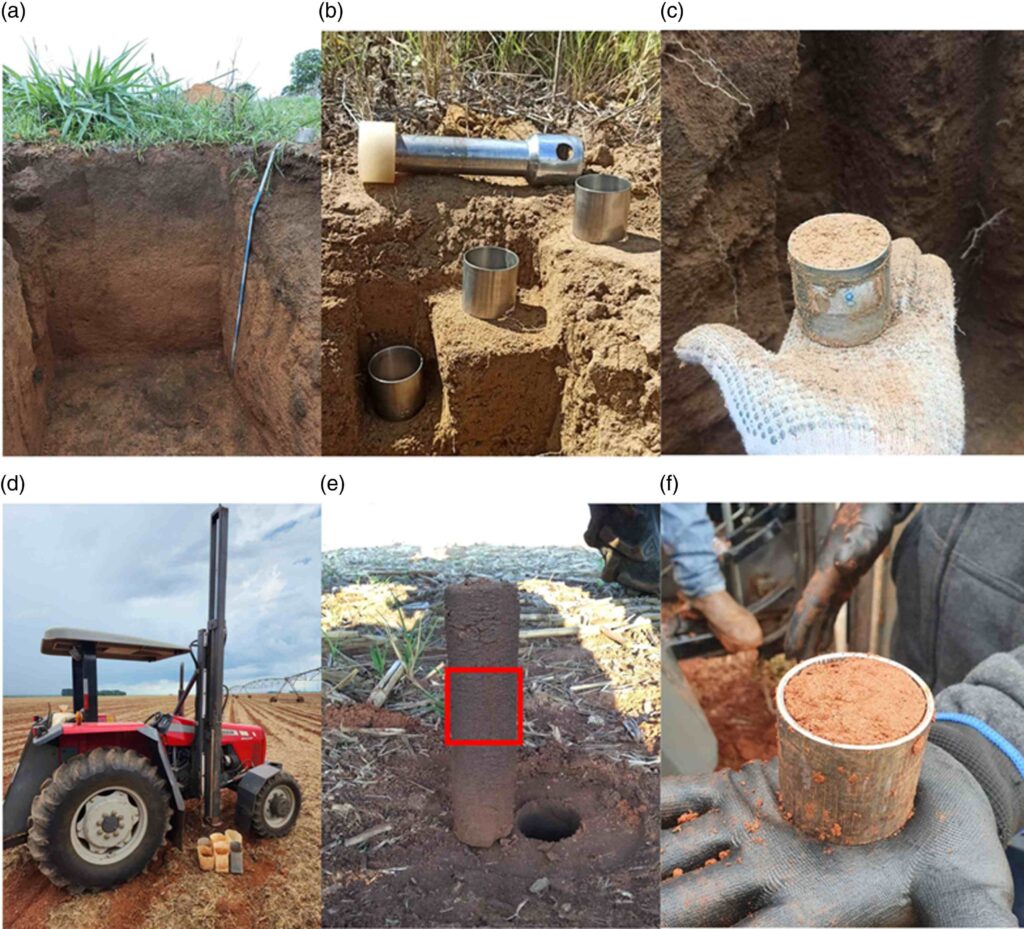Rafael Braghieri Menillo, Renato Paiva de Lima and Maurício Roberto Cherubin
Abstract
The assessment of soil organic carbon (SOC) stocks relies on several key factors, including the total SOC content of the soil, the bulk density (BD) of the soil, and the depth of the sampled layers. However, traditional methods, particularly those using volumetric cylinders for undisturbed soil sampling, present significant logistical challenges for large-scale projects due to their costly and time-consuming nature, often requiring the excavation of trenches. In response, automated probes, which are commonly used in geological studies, offer a promising alternative, but their application in the context of BD soil studies remains under discussion. The objective of this study was to evaluate the efficacy of a tractor-mounted probe in comparison to the conventional core method for the collection of undisturbed soil samples across a range of soil textures and depths. The results indicated that the coefficient of variation (CV) for the probe’s bulk density (BD) measurements ranged from 3 to 15% in sandy soils but remained consistently below 5% in clay-sandy-loam and clay textures. Despite small differences in BD values between the methods used, SOC stock assessments showed only minor variations across all layers, regardless of soil texture. Therefore, this study demonstrated that the tractor-mounted probe represents a viable and scalable solution for conducting large-scale SOC stock assessments, despite its susceptibility to minor variations in sandy soil conditions. This research contributed to the field of automated soil sampling tool validation and offered alternatives for field operationalization in large-scale carbon projects. It also raised new questions for further investigation into other field conditions
Keywords
Soil bulk density; soil sampling methods; automatized soil sampling; carbon projects





